Kotahi Mano Kāika -- 25 years strong
Feb 12, 2025

Over the past 25 years, Kotahi Mano Kāika has become synonymous with language revitalisation, spearheading the iwi’s efforts to see Kāi Tahu reo flourishing within our communities. As the movement approaches its 25th anniversary, TE KARAKA is reflecting on its journey – the many milestones achieved and many more yet to come. Nā ANNA BRANKIN.
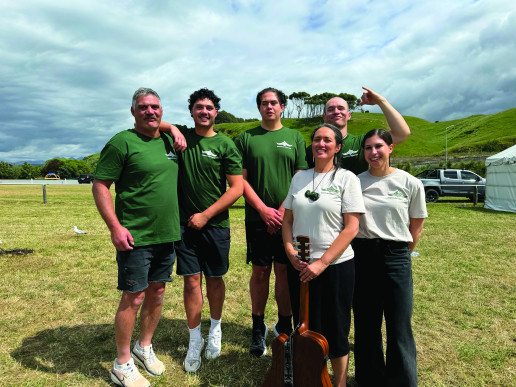
Above: Charisma with her whānau, from left: Lewis Pou, Tāiki Pounamu, Aki Pou, Te Aotahi Rice and Ihimaera McIntyre. PHOTOGRAPHS: SUPPLIED
Kotahi mano kāika, kotahi mano wawata – a thousand homes achieving a thousand aspirations. The rejuvenation of Kāi Tahu reo, in at least 1000 Kāi Tahu homes.
THIS WAS THE OVERARCHING VISION OF THE KĀI TAHU LANGUAGE strategy, launched in 2000 alongside the establishment of Kotahi Mano Kāika (KMK), the team charged with bringing it to life. The strategy and its lofty goals emerged in response to the devastating loss of te reo Māori among Kāi Tahu communities, a direct result of colonisation and decades of forced assimilation.
For generations, the dream of restoring our language and cultural identity was just that – a dream. It wasn’t until the achievement of the Kāi Tahu settlement in 1998 that the iwi had the resources to invest in its realisation. Kotahi Mano Kāika was developed and implemented by a Kāi Tahu reo advisory group led by Hana O'Regan and the late Tahu Pōtiki, including Rangi Nicholson, Alva Kapa, Toni Torepe, Kukupa Tirikatene. Lynne Te Aika was the first manager who worked to implement the strategy alongside the late Mason Ngawhika and Charisma Rangipunga. From the outset it was clear that KMK was more than just a strategy; it was a rallying call to action, and it is safe to say that Kāi Tahu whānau have responded.
While the ultimate aspiration has yet to be realised – 1,000 whānau speaking Kāi Tahu reo as their first language in the home – the initiative has engaged well over 1,000 households in its 25 years. KMK manager Paulette Tamati-Elliffe says that this is a significant milestone in itself, given that the first step to intergenerational transmission is whānau commitment. “What we’ve seen is that the appetite for it is really spread across the generations. We have kaumātua who weren’t able to raise their tamariki speaking te reo, and now they’re on the journey to learn alongside their mokopuna,” she says. “And then we’ve got our young families, striving to learn as quickly as possible so they can share it with their pēpi.”
The determination whānau have to reclaim Kāi Tahu reo highlights the depths of our language loss, and sets clear expectations around the journey ahead of us. “We always say that language revitalisation is long – it’s slow, and at times tedious,” says Paulette. “There’s no fast way to do it, but by looking to examples in other communities around the world, as well as what we’ve achieved so far, we know that it is possible to be successful.”
Charisma Rangipunga agrees, saying that a deliberate and considered approach is required. Her involvement with KMK stretches back to its origins in 2000, as part of the team that socialised the strategy and began its implementation. Today, she is the Chair of Te Here, the board overseeing all the activities of Te Rūnanga o Ngāi Tahu, including KMK.
First and foremost, however, Charisma is the māmā to three boys who she is proud to have raised with te reo Māori as their first language – something that she attributes to the support of KMK. “I will be forever grateful for the investment the tribe made in Kotahi Mano Kāika and therefore into my whānau,” she says. “My boys have never struggled for te reo. The next challenge will be ensuring that they don’t take it for granted.”
When Charisma reflects on KMK’s progress over the past quarter century, she thinks back to those early days. “I think at the time there was about three percent of Kāi Tahu who were considered to be confident in te reo Māori,” she says. “Meanwhile you could count the native speakers of our Kāi Tahu mita on one hand. So it was not just about how to revive the language amongst our whānau, but how to revive the Kāi Tahu dialect specifically.”
Knowing that they had one shot to get it right, the team took to the road to socialise the KMK strategy with whānau throughout the takiwā. “We were prepared for it to be a hard sell,” Charisma remembers. “There were so few fluent speakers around that the idea of becoming a te reo Māori speaking household seemed like an unachievable goal.”
The team started with the target of registering 100 families with KMK within the first year. They had 400 whānau signed up within a month. “That’s when we realised that the demand and the appetite for te reo was absolutely there,” says Charisma. Over the next few years, the team trialled several methods of delivering Kāi Tahu reo to whānau, including distributing resources, holding events and supporting self-directed learning.
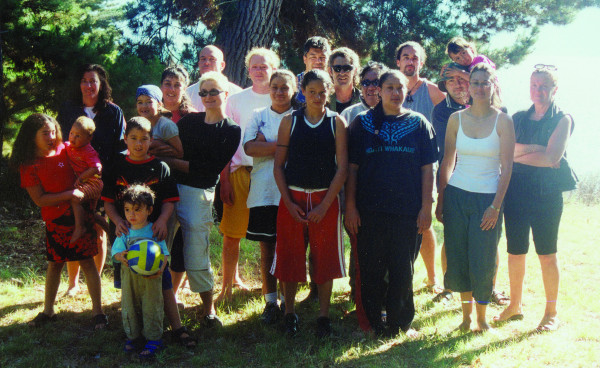
Tāwini and her siblings with KMK whānau at Hāwea nohoaka site – including Megan Ellison, Hana O'Regan, Mahana Paerata, David Ormsby, Toni Torepe, Clare White, Aaron Rice-Edwards, Rakihia Tau, Iaean Cranwell.
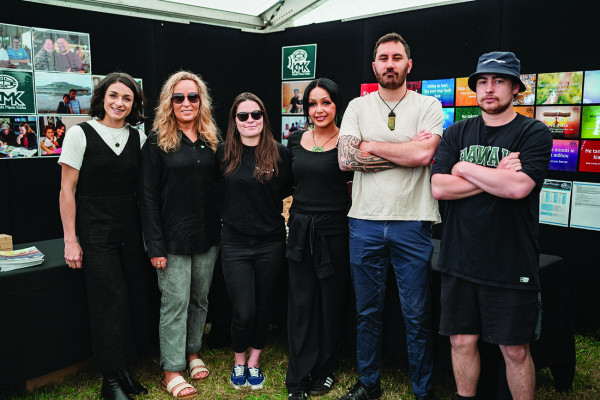
KMK team and supporters at Hui ā-iwi, Kaikōura – Rānui Ellison, Paulette Tamati-Elliffe, Georgia Gunn-Solomon, Aaria Rolleston, Levi Collier-Robinson, Tumai Cassidy.
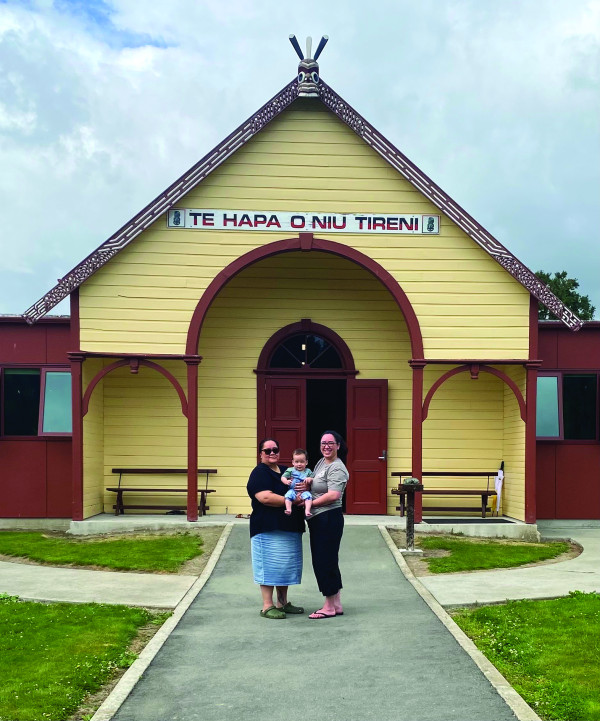
Kelly-Ann Tahiti and Tāwini White with their son, Matawera.
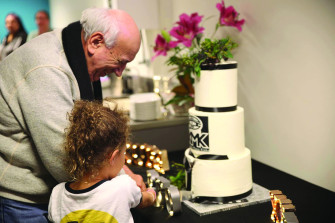
Sir Timoti Karetū cuts cake at Ōtākou Marae to celebrate 20 years of Kura Reo ki Te Waipounamu with Maiana-Sam Morrison.

Rangimaria Waiatarere with tamariki at Kia Kūrehu, Arowhenua Marae 2023.
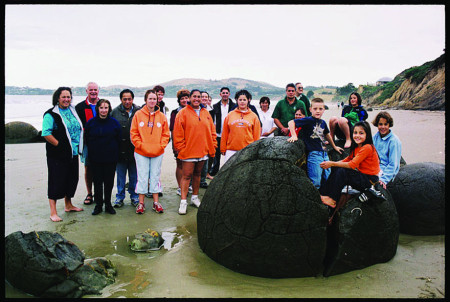
KMK whānau at Moeraki Boulders.
Eventually, it became clear that the wānanga method was the most effective, and today KMK holds several throughout the year: Kia Kūrapa, Kura Reo, Aoraki Matatū. “We encourage whānau to learn te reo Māori wherever they can get it, and to come to our wānaka for that deep dive into Kāi Tahutaka,” says Paulette. “Nothing beats the kanohi ki te kanohi experience, and staying together on the marae always helps whānau to connect and really engage with the reo.”
Over the years, KMK has continually refined its approach, creating pathways for whānau at all stages of their reo journey. Word has spread and these days there are wait lists for most kaupapa, as the small team of five do their best to support the iwi. It’s a far cry from the early years, when Paulette says the KMK community was a small group of familiar faces.
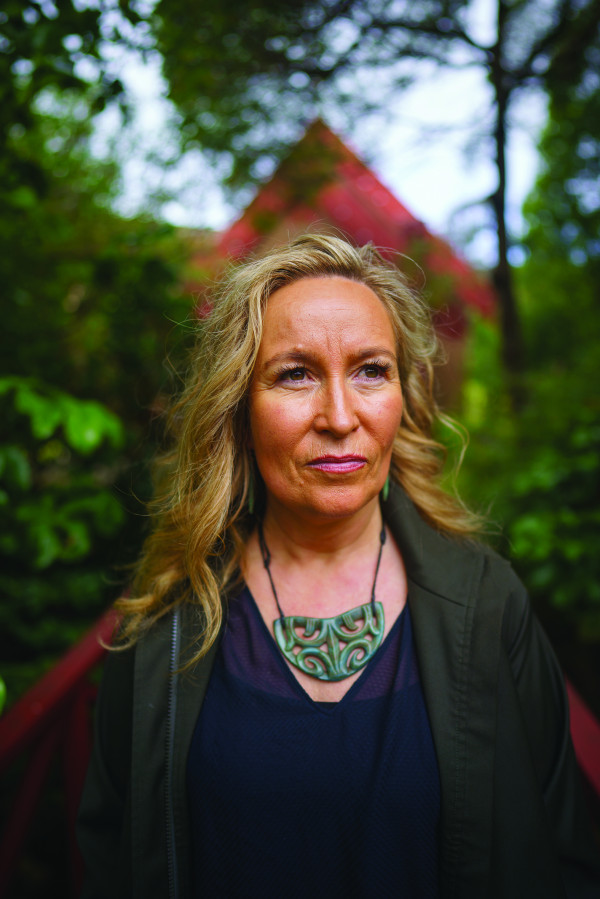
“THESE KIDS RAISED PROACTIVELY AS KĀI TAHU ARE BECOMING HAPŪ LEADERS AND REMAIN CONNECTED TO THEIR IDENTITY. THEY ARE OUR FUTURE, AND THEIR REO JOURNEYS WILL DEFINE THE NEXT CHAPTER OF KMK.” PAULETTE TAMATI-ELLIFFE Manager, Kotahi Mano Kāika
“Twenty-five years ago there was a small handful of whānau doing this, showing up to every event and really keeping the movement alive,” she says. “Today, we’re meeting new whānau at every event. We sometimes joke about KMK being a gateway drug because it helps lead whānau back home, to their hapū and their marae.
For Tāwini White, KMK has played a pivotal role in shaping her connection to te reo Māori and her Kāi Tahu identity. She’s been a part of the programme since its inception, and has cherished memories of attending the launch and later participating in Nohoaka Reo, an immersive wānaka that combined language learning with connection to whenua and whakapapa. “We would camp at Hāwea, speak te reo Māori and create contexts for its use,” she recalls. “It normalised te reo Māori for me as a child. It was fun, but it also planted seeds of responsibility and connection that stayed with me.” These formative experiences made a lasting impression on Tāwini, and were part of what drew her to study at the University of Otago despite spending her high school years living in Rāwene in the far north.
“I wanted to be back in the Kāi Tahu takiwā, and to be immersed back in my culture and people,” she says. That is exactly what happened, as Tāwini started attending KMK events and ultimately found herself a member of the team for several years. Today, she is the true embodiment of the movement, raising her son Matawera speaking Kāi Tahu reo.
“I aspire for it to be so natural for him that he doesn’t have to think about it. Although I consider myself semi-proficient, I still harbour the feeling of whakamā for not knowing more. I don’t want that for my boy,” Tāwini says. “I want him to have that positive experiences with te reo Māori and everything it encompasses.”
KMK’s strength lies in its emphasis on whānau-led leadership. From the beginning, the strategy’s architects recognised that true revitalisation starts in the home. Paulette credits their foresight: “They got it right, centring the strategy on whānau. It begins in the home, with whānau having mana over what happens there,” she says. “We are there to support, but ultimately whānau have to take responsibility for creating their own language plan.”
Urban centres like Ōtautahi and Ōtepoti have been particularly fertile ground for KMK’s initiatives, with larger Kāi Tahu populations enabling the formation of reo-speaking networks. “It’s easier when there is a cluster of whānau who can support one another,” says Paulette.
“We’ve still got some challenges ahead around strengthening te reo Māori within our papakāika communities, supporting the marae who are already leading the way in that space.”
While the numbers are worth celebrating, KMK’s impact goes far beyond metrics. Charisma describes the cultural renaissance that has emerged alongside the initiative, particularly in the creation of waiata that have become beloved across Kāi Tahu. “These waiata have engaged whānau who might not yet be fluent, or even on their learning journey, but can still feel connected through that form of storytelling,” she says.
"The ripple effects of KMK can also be seen in the growing confidence of Kāi Tahu rakatahi, who are stepping into leadership roles within their hapū and iwi. “These kids raised proactively as Kāi Tahu are becoming hapū leaders and remain connected to their identity,” says Paulette. “They are our future, and their reo journeys will define the next chapter of KMK.”
Despite its successes, KMK’s champions are keenly aware of the challenges that remain. Charisma highlights the importance of critical reflection, noting that revitalisation is an ongoing process requiring both celebration and accountability. “There are many amazing milestones to celebrate and equally there are learnings that we need to take forward,” she says. “The focus on normalising te reo Māori in homes must remain central.” This honest assessment is essential for charting a course forward, ensuring that the next phase of KMK builds on its successes while addressing areas for growth.
As KMK approaches its 25th anniversary, its legacy is already evident. The initiative has transformed lives, empowered communities, and redefined what is possible in language revitalisation. Yet the journey is far from over. The dream of 1,000 fluent homes remains a powerful aspiration, guiding KMK’s work as it adapts to the evolving needs of Kāi Tahu whānau. For those who have walked this path, the vision of a future where te reo Māori thrives naturally in every Kāi Tahu home remains not just a goal but a profound expression of identity, resilience, and hope. Kotahi mano kāika, kotahi mano wawata – a thousand homes, achieving a thousand aspirations.